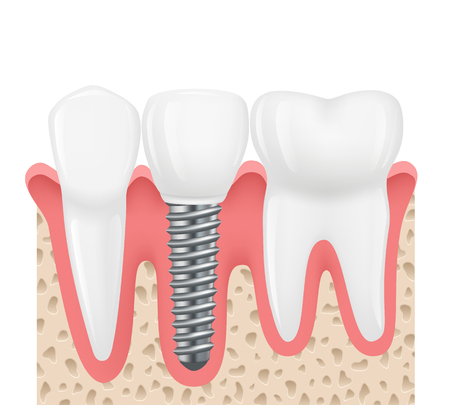1. Understanding Invisalign and Budget Aligners
As a parent, you want the best for your teen’s dental health, but with so many options available, it can be challenging to decide which aligner treatment is right. Invisalign and budget-friendly aligners are two popular choices for straightening teeth, but they have key differences in how they work, their costs, and their overall effectiveness.
What Is Invisalign?
Invisalign is a well-known brand of clear aligners that provides a customized orthodontic treatment plan. These aligners are made from SmartTrack material and designed to gradually shift teeth into the desired position over time. Treatment is monitored by an orthodontist or dentist to ensure proper alignment progress.
What Are Budget Aligners?
Budget aligners, sometimes called direct-to-consumer (DTC) aligners, offer a more affordable way to straighten teeth. These aligners are typically ordered online after taking an at-home impression or scan of the teeth. Unlike Invisalign, budget aligners may not always involve in-person supervision by a dental professional.
Key Differences Between Invisalign and Budget Aligners
| Feature | Invisalign | Budget Aligners |
|---|---|---|
| Supervision | Treatment is monitored by an orthodontist or dentist with regular check-ups. | Usually involves remote monitoring or minimal professional oversight. |
| Customization | Uses 3D scans and custom-made aligners tailored to the patients needs. | Often relies on at-home impressions, which may not be as precise. |
| Treatment Complexity | Can address mild to complex orthodontic cases. | Mainly designed for mild to moderate alignment issues. |
| Material | Made from SmartTrack material for better comfort and control. | The quality of materials varies by brand. |
| Cost | Tends to be more expensive due to professional supervision and higher-quality materials. | A more affordable option but with potential trade-offs in effectiveness and oversight. |
How Do Clear Aligners Work?
Both Invisalign and budget-friendly aligners use a series of clear plastic trays that gradually shift teeth into alignment. The patient wears each set of aligners for about 1-2 weeks before switching to the next set. Over time, the teeth move into their desired positions based on the treatment plan.
The Importance of Supervision
A key difference between Invisalign and budget aligners is the level of supervision. With Invisalign, an orthodontist monitors progress and makes adjustments if needed. Budget aligners often rely on remote check-ins or self-monitoring, which may not catch issues that require professional intervention.
2. Safety Considerations for Teens
As a parent, ensuring your teen’s safety while they undergo orthodontic treatment is a top priority. When choosing between Invisalign and budget aligners, there are several key factors to consider, including material safety, potential risks, and the importance of professional supervision.
Material Safety
The materials used in aligners can impact both comfort and health. Invisalign aligners are made from SmartTrack material, which is BPA-free and designed for safe, long-term use. On the other hand, budget aligners may use different types of plastics that vary in quality and safety standards.
| Factor | Invisalign | Budget Aligners |
|---|---|---|
| Material Type | BPA-free SmartTrack material | Varies by brand; may not be BPA-free |
| Comfort & Flexibility | Designed for a snug but comfortable fit | May feel stiffer or less refined |
| FDA Approval | Yes | Depends on the provider |
Potential Risks
No matter which option you choose, there are risks involved with any orthodontic treatment. However, budget aligners often carry additional risks due to the lack of direct dental supervision.
Lack of Supervision Can Lead to Issues
A major concern with some budget aligner brands is that they do not require regular check-ins with an orthodontist or dentist. Without proper monitoring, issues such as improper tooth movement, gum recession, or bite misalignment can occur.
Poor Fit and Discomfort
If an aligner does not fit properly, it can cause discomfort or even lead to long-term dental problems. Invisalign aligners are custom-made using precise 3D scans, whereas some budget options rely on at-home impressions, which may not always be accurate.
The Importance of Professional Supervision
The role of an orthodontist or dentist in your teen’s treatment cannot be overstated. Professional oversight ensures that teeth are moving correctly and that any complications are addressed early.
- Regular Check-ups: Invisalign treatments involve routine visits to monitor progress.
- Treatment Adjustments: If needed, a dentist can make necessary changes to ensure better results.
- Avoiding Long-Term Damage: Professional guidance helps prevent irreversible dental issues caused by improper alignment.
If you’re considering clear aligners for your teen, prioritizing safety should be your first step. Understanding the differences between Invisalign and budget options can help you make an informed decision that protects their smile for years to come.

Effectiveness and Treatment Outcomes
Comparing Invisalign and Budget Aligners
When considering teeth straightening options for teens, both Invisalign and budget aligners promise effective results. However, their effectiveness can vary based on factors like material quality, treatment customization, and monitoring.
| Feature | Invisalign | Budget Aligners |
|---|---|---|
| Treatment Customization | Highly customized with 3D scanning and in-office monitoring | Often relies on at-home impressions, which may not be as precise |
| Material Quality | Uses SmartTrack material for better fit and controlled movement | Materials vary; some may not provide the same level of control |
| Treatment Monitoring | Regular check-ins with an orthodontist to track progress | Mainly self-monitored, with fewer professional assessments |
| Treatment Time | Averages 12-18 months, depending on complexity | May take longer or result in less predictable outcomes |
The Importance of Proper Monitoring
A major factor in achieving successful results is consistent monitoring. Invisalign treatment includes regular visits to an orthodontist who can make necessary adjustments and ensure the teeth are moving as planned. In contrast, budget aligners rely more on remote supervision or self-monitoring, which can lead to potential complications if issues arise.
The Impact on Treatment Results
Lack of professional oversight can sometimes result in misalignment or incomplete corrections. Teens may not always wear their aligners as instructed, and without regular check-ups, problems could go unnoticed until they become more difficult to fix.
What Parents Should Consider
If your teen needs orthodontic treatment, its important to weigh the benefits of a professionally monitored solution like Invisalign against the lower cost but higher risk of budget aligners. Ensuring proper monitoring throughout the process can make a significant difference in achieving the desired outcome.
4. Costs and Financial Considerations
When considering orthodontic treatment for your teen, cost is often a major factor. Invisalign and budget aligners come at different price points, and understanding what youre paying for can help you make the best decision for your child’s dental health.
Breaking Down the Costs
The cost of clear aligners varies based on several factors, including the complexity of the treatment, provider fees, and additional care required. Below is a general comparison of Invisalign versus budget aligners:
| Factor | Invisalign | Budget Aligners |
|---|---|---|
| Average Cost | $3,000 – $8,000 | $1,200 – $3,500 |
| Treatment Supervision | Regular in-person visits with an orthodontist or dentist | Mostly remote monitoring with limited or no in-person visits |
| Treatment Duration | 12-18 months (varies by case) | 6-12 months (for mild cases) |
| Suits Complex Cases? | Yes, suitable for mild to severe alignment issues | Mainly effective for mild to moderate cases only |
| Insurance Coverage | Often partially covered by dental insurance | Might be covered but less common than Invisalign |
| Add-ons & Retainers | Might include refinements; retainers usually cost extra ($100-$300) | Lesser refinement options; retainers may cost extra ($100-$200) |
What Parents Should Consider
The lower price tag of budget aligners can be tempting, but there are important considerations beyond just cost:
Your Teen’s Needs:
If your teen has more complex orthodontic issues such as severe crowding or bite problems, Invisalign may be the better choice due to its professional oversight and advanced treatment capabilities.
Treatment Monitoring:
A key difference is that Invisalign requires regular check-ups with a licensed provider, ensuring that the teeth are moving correctly. Budget aligners rely mostly on remote monitoring, which may not be ideal for all cases.
Long-Term Investment:
The upfront savings from budget aligners may seem appealing, but if the results aren’t satisfactory, additional treatment could end up costing more in the long run. Invisaligns personalized care can reduce the risk of complications that might require further correction.
Insurance and Payment Plans:
Dental insurance may cover part of the cost for both types of aligners, but Invisalign is typically more widely accepted. Many providers also offer flexible payment plans to help spread out costs over time.
No matter which option you choose, its essential to weigh both short-term affordability and long-term effectiveness when making a decision about your teens smile.
5. Making the Best Choice for Your Teen
Choosing the right aligner for your teen can feel overwhelming, but by considering a few key factors, you can make an informed decision that fits their dental needs, lifestyle, and your budget.
Understanding Your Teen’s Dental Needs
Not all teeth straightening options work for every teen. Some may have minor alignment issues that budget aligners can handle, while others may need more advanced treatment with Invisalign. Consulting with a dentist or orthodontist is the best way to determine what will work best.
Considering Lifestyle and Commitment
Clear aligners require discipline—your teen must wear them for 20-22 hours a day and keep up with proper cleaning. If they often forget things or struggle with routines, Invisalign’s in-person supervision might be a better choice than budget aligners, which rely on at-home monitoring.
Comparing Costs and Long-Term Value
Cost is a major factor for many families. While budget aligners are more affordable upfront, Invisalign provides professional supervision that may prevent costly corrections later. Here’s a quick comparison:
| Factor | Invisalign | Budget Aligners |
|---|---|---|
| Supervision | Treated by an orthodontist or dentist | Mainly self-managed, with remote check-ins |
| Treatment Complexity | Can address mild to complex cases | Mainly for mild to moderate issues |
| Total Cost | $3,000 – $8,000 (varies by provider) | $1,200 – $2,500 (typically lower cost) |
| Lifestyle Fit | Bests for teens who need guidance & check-ups | Bests for responsible teens comfortable with self-monitoring |
The Importance of Professional Guidance
No matter which option you consider, it’s always best to consult with a licensed dental professional before starting treatment. They can help assess your teen’s unique situation and ensure the chosen aligner is safe and effective.

